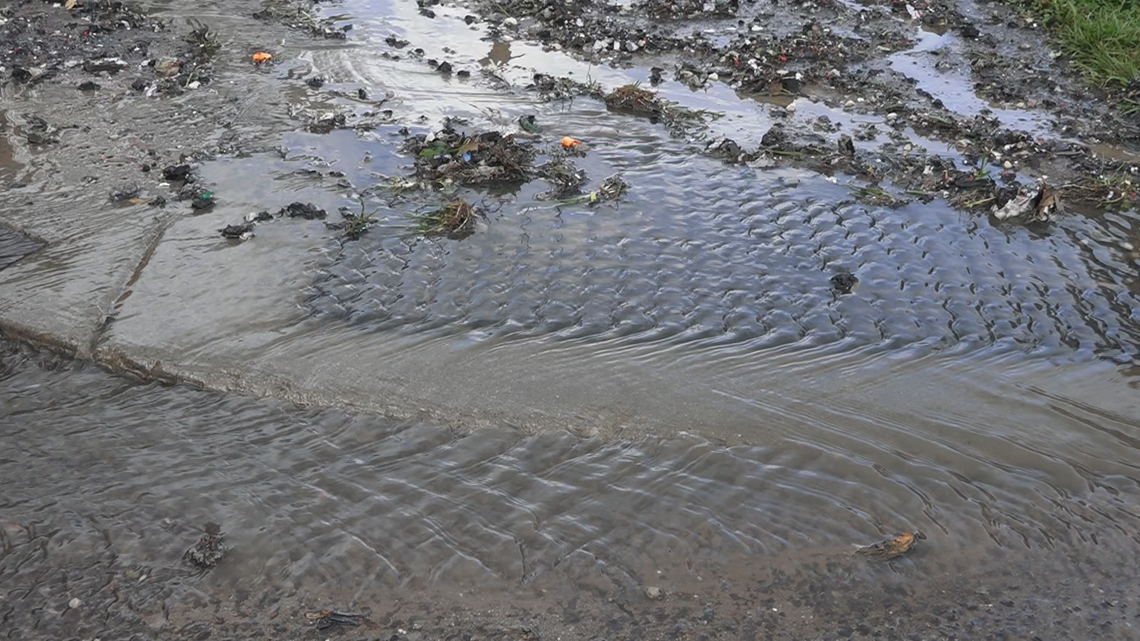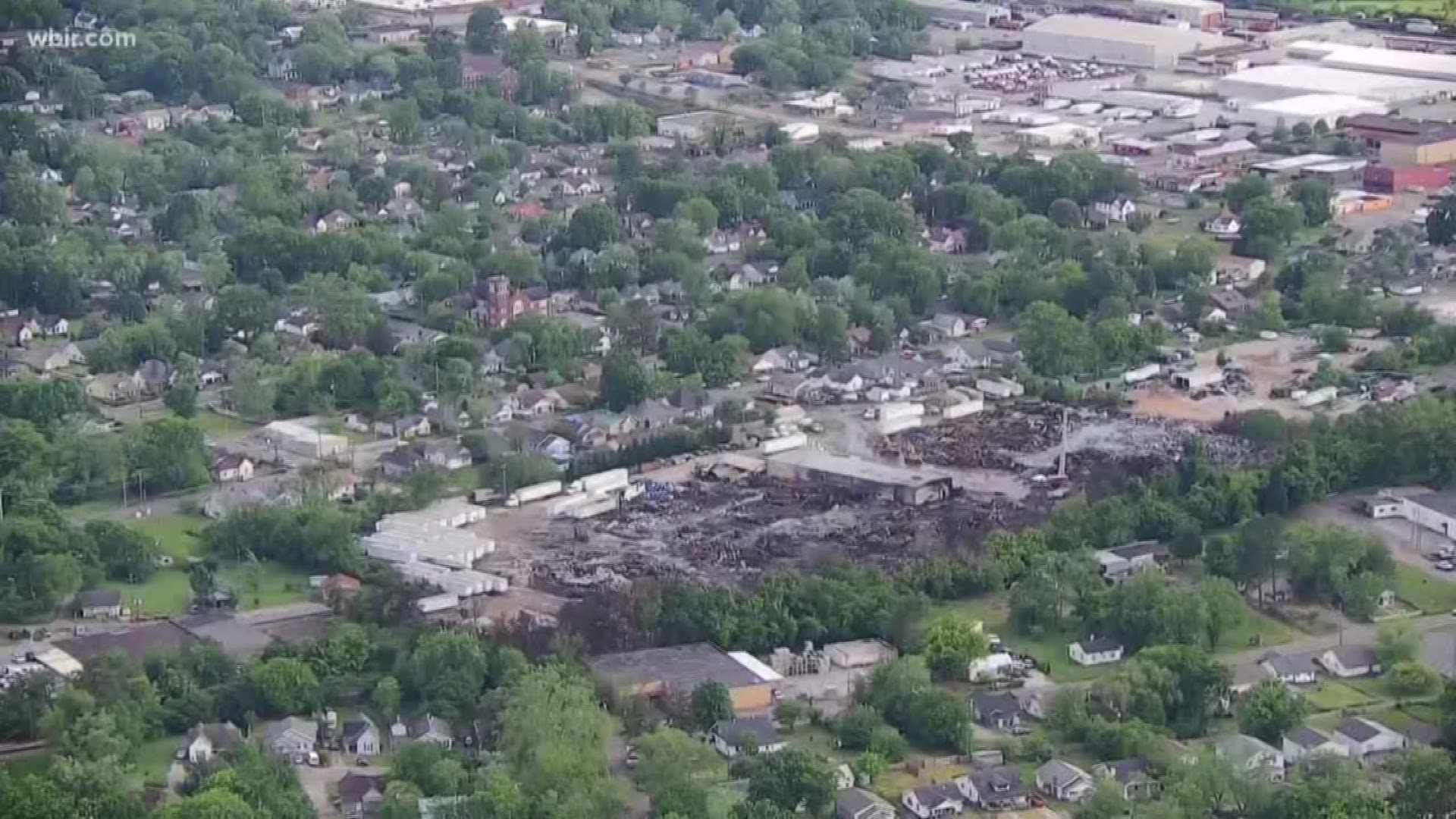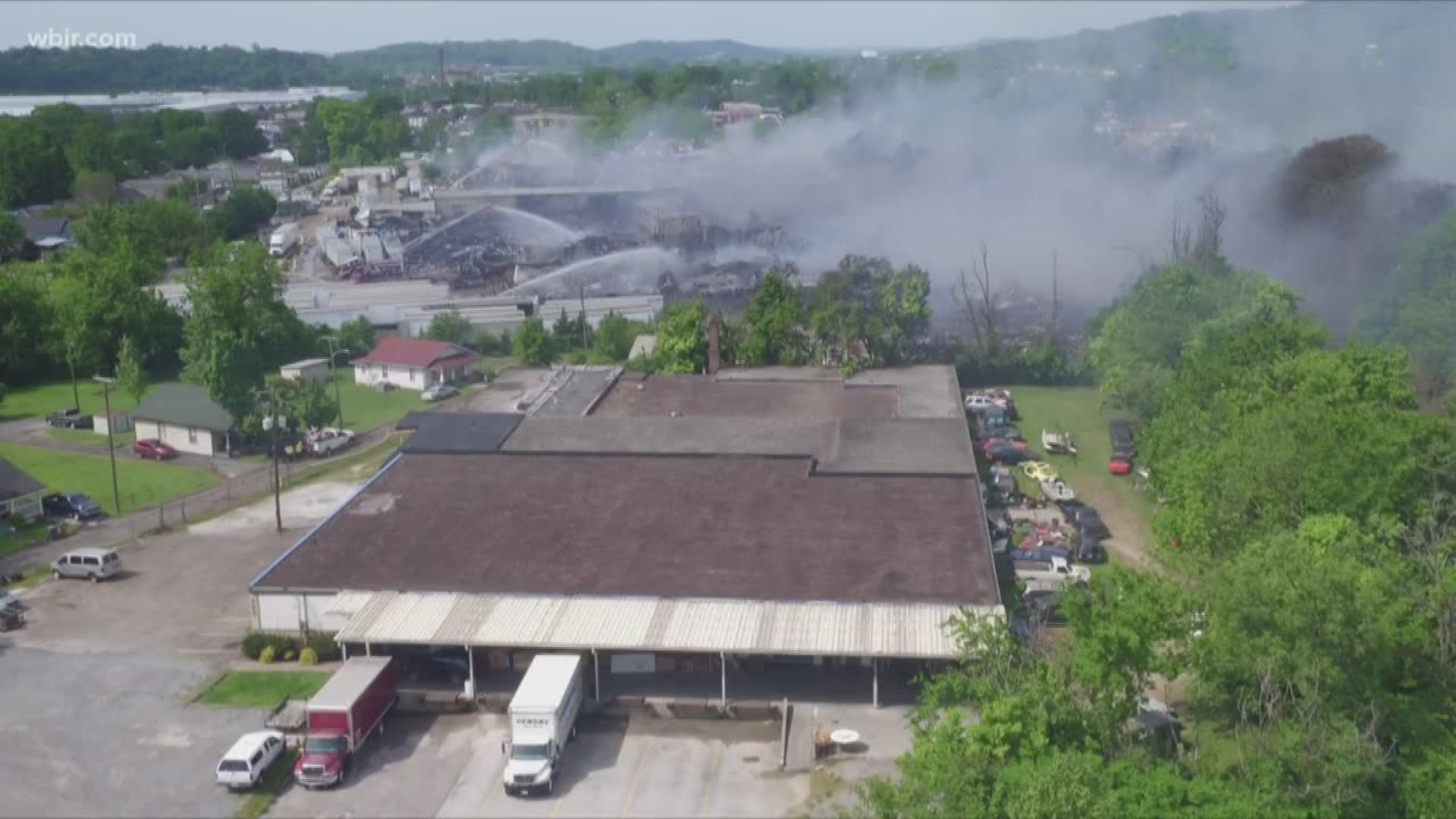As the clean up continues, the millions of gallons of water used to fight the fire will run off into the storm drains and ultimately into the rivers.
On every street corner around the Fort Loudon Waste and Recycling plant, water continues to run off from inside the plant into the storm drains and all that dirty water used to fight the fire is a cause for concern for the environment.
Gone are the flames, the smoke, and the firefighters and left behind are sidewalks covered with mud and water seeping out from the burnt rubble.
"This morning, for all intents and purposes, the fire is out," KFD Captain DJ Corcoran said. "About 180,000 gallons of water per hour is what they were putting on that. That's a lot of water. You're going to have a lot of run off with that."


The City of Knoxville Stormwater engineering department is monitoring contamination levels in rivers and creeks near the plant. While oxygen levels are lower than usual in some parts of Second Creek, it hasn't gotten to the point where fish are dying.
"Some chemicals can affect oxygen levels and that's when you're at risk of what's called a fish kill," said Kathleen Gibi with Keep the TN River Beautiful.
Engineers don't yet know exactly what contaminants are in the water coming out of the recycling plant. What is known is where all the water will end up.
"Ultimately this all winds up in the river. It goes into the stormwater drain system, into the creeks, and then into our river system," Gibi said.


RELATED: Should I be worried about the smoke from the massive Knoxville fire, and where can I go for help?
The Knoxville Fire Department used filtration tubes to try and contain some of the pollutants before they get to the river.
"It's a long cylinder, tube like that you'd use at a pool," Corcoran said. "When you're dealing with that volume of water, you want to try and keep that filtered and protect the wildlife and fish downstream."
As they pack up the hoses and trucks, it's clear the millions of gallons of water used to fight the fire did its job.
"Getting the fire out was our main concern," Corcoran said.
RELATED: Records: North Knoxville recycling plant faced 2018 fines, inspections; one case still open
The city's Stormwater Division Chief Chris Howley said the department is monitoring oxygen levels in Second Creek after some showed low levels and so far there's no fish kill.
He said rain could help flush everything out and it could be some time before everything is back to normal.
Howley said he didn't know yet if everything that was in the water was from the fire. Therefore, he said not to fish in the creeks right now because they could be unsafe.
Keep reading about the fire that destroyed Fort Loudon Waste and Recycling and send smoke into the sky that could be seen for miles:
- Neighbors watch in shock, awe as fire blazes in North Knoxville
- Here's where to go if you are evacuated from area around large fire at recycling center
- Recycling center fire prompts memories of large 2012 mulch fire
- These are all the roads closed because of the Fort Loudon Waste and Recycling fire
- Initial emergency alert text sent to N. Knox residents about fire contained incomplete info
- Where are you seeing it from? Folks across Knoxville can see the fire from miles away
- A local photographer captured these absolutely apocalyptic images of the garbage fire


